• Ordinal logistic regression (Cumulative logit modeling) • Proportion odds assumption • Multinomial logistic regression • Independence of irrelevant alternatives, Discrete choice models Although there are some differences in terms of interpretation of parameter estimates, the essential ideas are similar to binomial logistic regression The probability that an event will occur is the fraction of times you expect to see that event in many trials Probabilities always range between 0 and 1 The odds are defined as the probability that the event will occur divided by the probability that the event will not occur If the probability of an event occurring is Y, then the probability of the event not occurring is 1Y (Example If the probability of an event is 080 (80%), then the probability Probability vs Odds vs Log Odds All these concepts essentially represent the same measure but in different ways In the case of logistic regression, log odds is used We will see the reason why log odds is preferred in logistic regression algorithm Probability of 0,5 means that there is an equal chance for the email to be spam or not spam

The Difference Between Relative Risk And Odds Ratios The Analysis Factor
Odds vs probability logistic regression
Odds vs probability logistic regression- In a logistic regression model, odds ratio provide a more coherent solution as compared to probabilities Odds ratio represent the constant effect of an independent variable on a dependent variable Here, being constant means that this ratio does not change with a change in the independent (predictor) variable0) This is sometimes called the logit transformation of the probability In the logistic regression model, the magnitude of the association of X and Y is represented by the slope β 1 Since X is binary, only two cases need be considered X = 0 and X = 1 The logistic regression model lets us define two quantities 𝑃𝑃0= Pr(𝑌𝑌= 1




Logistic Regression Details Pt1 Coefficients Youtube
Next, discuss Odds and Log Odds Odds The relationship between x and probability is not very intuitive Let's modify the above equation to find an intuitive equation Step1 Calculate the probability of not having blood sugar Step2 Where p = probability of having diabetes 1p = probability of not having diabetes You can interpret odd like belowLogistic Regression and Odds Ratio A Chang 1 Odds Ratio Review Let p1 be the probability of success in row 1 (probability of Brain Tumor in row 1) 1 − p1 is the probability of not success in row 1 (probability of no Brain Tumor in row 1) Odd of getting disease for the people who were exposed to the risk factor (pˆ1 is an estimate of p1) O =A Difference between probability and odds b logistic command in STATA gives odds ratios c logit command in STATA gives estimates d difficulties interpreting main effects when the model has interaction terms e use of STATA command to get the odds of the combinations of old_old and endocrinologist visits (1,1, 1,0, 0,1, 0,0) f
For a binary independent variable in logistic regression, an odds ratio of 23 means that if the binary variable = 1 (in other words, it is present), the odds of y = 1 increase by 231 = 13 = 130% This is a pretty meaningful changeWe can also transform the log of the odds back to a probability p = exp()/(1exp()) = 245, if we like Logistic regression with a single dichotomous predictor variables Now let's go one step further by adding a binary predictor variable, female, to the model Writing it in an equation, the model describes the following linear relationship81 Introduction to logistic regression Until now our outcome variable has been continuous But if the outcome variable is binary (0/1, "No"/"Yes"), then we are faced with a classification problem The goal in classification is to create a model capable of classifying the outcome—and, when using the model for prediction, new observations—into one of two categories
The survival probability is if Pclass were zero (intercept) However, you cannot just add the probability of, say Pclass == 1 to survival probability of PClass == 0 to get the survival chance of 1st class passengers Instead, consider that the logistic regression can be interpreted as a normal regression as long as you use logits A logistic regression model provides the 'odds' of an event Remember that, 'odds' are the probability on a different scale Here is the formula If an event has a probability of p, the odds of that event is p/ (1p) Odds are the transformation of the probability Based on this formula, if the probability is 1/2, the 'odds' is 1OptinMon 05 Probability, Odds and Odds Ratios in Logistic Regression Confusing Statistical Term #8 Odds by Karen GraceMartin Leave a Comment Odds is confusing in a different way than some of the other terms in this series
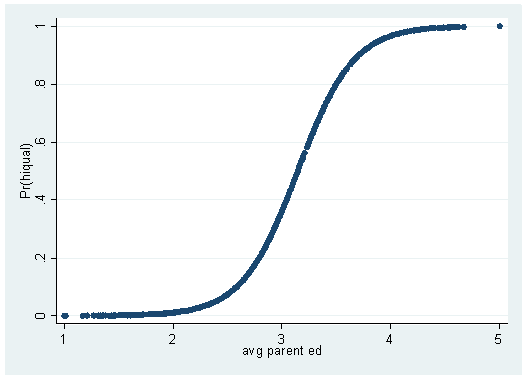



Logistic Regression With Stata Chapter 1 Introduction To Logistic Regression With Stata




Logistic Regression Analysis An Overview Sciencedirect Topics
P is the probability that the event Y occurs, p(Y=1) p/(1p) is the "odds ratio" lnp/(1p) is the log odds ratio, or "logit" all other components of the model are the same The logistic regression model is simply a nonlinear transformation of the linear regression Definition of the logistic function An explanation of logistic regression can begin with an explanation of the standard logistic functionThe logistic function is a sigmoid function, which takes any real input , and outputs a value between zero and one For the logit, this is interpreted as taking input logodds and having output probabilityThe standard logistic Logistic Regression The goal of logistic regression is the same as multiple linear regression, but the key difference is that multiple linear regression evaluates predictors of continuously distributed outcomes, while multiple logistic regression evaluates predictors of dichotomous outcomes, ie, outcomes that either occurred or did not




The Difference Between Relative Risk And Odds Ratios The Analysis Factor




Webinar Recording Signup
Tom the reported metric is the predicted probability of a positive outcome (see help margins;The log (odds) or logistic transformation of the odds (the logit) is the Dependent Variable in Logistic Regression Regression Equation Note the relation between the logit and X is linear If is the probability of one outcome, the linear regression equation also can be written This equation is not very intuitive to most people! While the estimated coefficients from logistic regression are not easily interpretable (they represent the change in the log of odds of participation for a given change in age), odds ratios might provide a better summary of the effects of age on participation (odds ratios are derived from exponentiation of the estimated coefficients from logistic regression see also The Calculation




25 1 Link Functions Just Enough R




Binary Logistic Regression With Odds Ratios Calculated For The Download Table
I see a lot of researchers get stuck when learning logistic regression because they are not used to thinking of likelihood on an odds scale Equal odds are 1 1 success for every 1 failure 11 Equal probabilities are 5 1 success for every 2 trials Odds can range from 0 to infinity Odds greater than 1 indicates success is more likely than failureHelp logistic postestimation) So the reported metric of margins is the risk rates of two groups by ivariable, and the output of margins rvariable is the absolute risk difference between two groups However, I want the output of logistic indep I have a question about plotting a probability curve for a logistic regression model that has multiple predictors I'm posted this here on SO because I'm wondering about ggplot2 specific solutions, and creating useful graphics from a logit model in ggplot2



1




Logistic Regression Details Pt1 Coefficients Youtube
The coefficient returned by a logistic regression in r is a logit, or the log of the odds To convert logits to odds ratio, you can exponentiate it, as you've done above To convert logits to probabilities, you can use the function exp (logit)/ (1exp (logit)) However, there are some things to note about this procedureSo a logit is a log of odds and odds are a function of P, the probability of a 1 In logistic regression, we find logit (P) = a bX, Which is assumed to be linear, that is, the log odds (logit) is assumed to be linearly related to X, our IV So there's an ordinary regression hidden in thereThe estimates in logistic regression are harder to interpret than those in linear regression because increasing a predictor by 1 does not change the probability of outcome by a fixed amount This is because the logistic function \(p(t) = \frac{1}{1 e^{t}}\) is not a




Logistic Regression Binary Dependent Variable Pass Fail Odds Ratio P 1 P Eg 1 9 Means 1 Time In 10 Pass 9 Times Fail Log Odds Ratio Y Ln P 1 P Ppt Download




Obtaining And Interpreting Odds Ratios For Interaction Terms In Jmp
Thinking about log odds can be confusing, though So using the math described above, we can rewrite the simple logistic regression model to tell us about the odds (or even about probability) Odds = e β0β1*X Using some rules for exponents, we can obtain Odds = (e β0)*(e β1*X) When X equals 0, the second term equals 10142, 143 Logistic regression Often a xed change in x has less impact when ˇ(x) is near zero or one Example Let ˇ(x) be probability of getting an A in a statistics class and x is the number of hours a week you work on homework When x = 0, increasing x by 1 will change your (very small) probability of an A very littleAn important property of odds ratios is that they are constant It does not matter what values the other independent variables take on For instance, say you estimate the following logistic regression model 1685 x 1 0039 x 2 The effect of the odds of a 1unit increase in x 1 is exp(1685) = 118 Meaning the odds increase by 18%




How To Interpret Logistic Regression Coefficients Displayr




R Calculate And Interpret Odds Ratio In Logistic Regression Stack Overflow
Recall that the function of logistic is to predict successful outcomes of that depends upon the the value of other values For mathematical reasons we take the log if this ratio in our estimation process If probability of success is math050/m If z represents the output of the linear layer of a model trained with logistic regression, then s i g m o i d ( z) will yield a value (a probability) between 0 and 1 In mathematical terms y ′ = 1 1 e − z where y ′ is the output of the logistic regression model for a particular example z = b w 1 x 1 w 2 x 2 w N x N2) At least how many
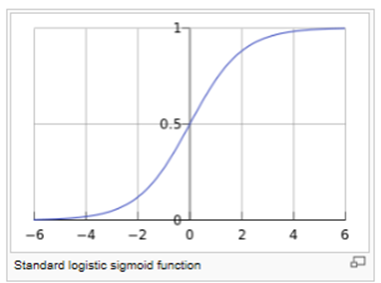



Probability Calculation Using Logistic Regression
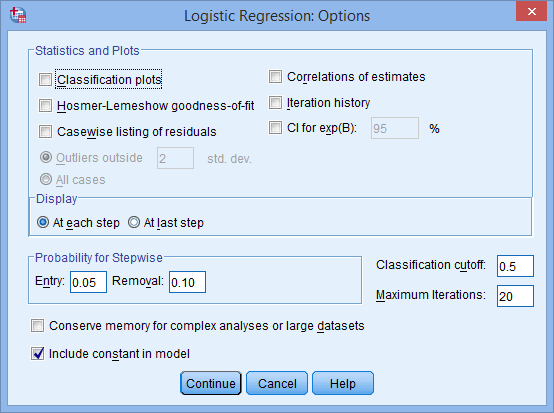



How To Perform A Binomial Logistic Regression In Spss Statistics Laerd Statistics
Logistic regression models a relationship between predictor variables and a categorical response variable For example, we could use logistic regression to model the relationship between various measurements of a manufactured specimen (such as dimensions and chemical composition) to predict if a crack greater than 10 mils will occur (a binary variable either yes or no)Examples OfLogistic Regression in R (Odds Ratio) Cross Validated As we can see, odds essentially describes the ratio of success to the ratio of failure In logistic regression, every probability or possible outcome of the dependent variable can be Page 26/38In video two we review / introduce the concepts of basic probability, odds, and the odds ratio and then apply them to a quick logistic regression example Un




Logistic Regression Why Sigmoid Function
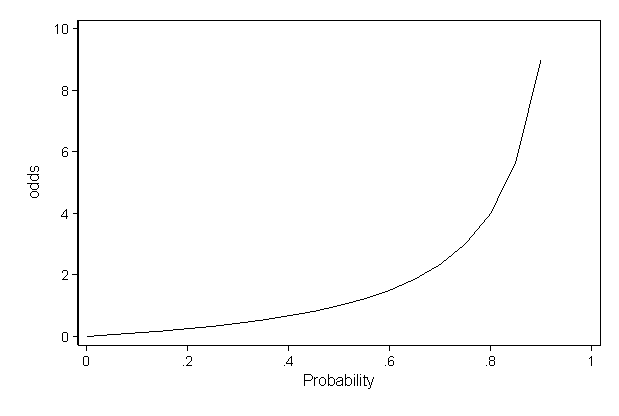



Faq How Do I Interpret Odds Ratios In Logistic Regression
The dataset of pass/fail in an exam for 5 students is given in the table below If we use Logistic Regression as the classifier and assume the model suggested by the optimizer will become the following for Odds of passing a course $\log (Odds) = 64 2 \times hours$ 1) How to calculate the probability of Pass for the student who studied 33 hours? The problem is that probability and odds have different properties that give odds some advantages in statistics For example, in logistic regression the odds ratio represents the constant effect of a predictor X, on the likelihood that one outcome will occur The key phrase here is constant effect In regression models, we often want a measure of the unique effect of each X Probability (of success) is the chance of an event happening For example, there might be an 80% chance of rain today Odds are the probability of success (80% chance of rain) divided by the probability of failure (% chance of norain) = 08/02 = 4, or 4 to 1 Logodds is simply the logarithm of odds 1




Presenting The Results Of A Multinomial Logistic Regression Model Odds Or Probabilities Select Statistical Consultants




Logistic Regression Wikipedia
The probability itself (as opposed to the probability ratio) is still the most useful thing logistic regression delivers, but due to its nonlinear nature it also can not be reported in the model summary via a single number (as opposed to the slope of oddsratios) Thus, we'll visualize probabilities, if fact all of them, but we will not report them in a table Log of Odds = log (p/ (1P)) This is nothing but the logit function Fig 3 Logit Function heads to infinity as p approaches 1 and towards negative infinity as it approaches 0 Note Probability For a primer on proportionalodds logistic regression, see our post, Fitting and Interpreting a Proportional Odds Model In this post we demonstrate how to visualize a proportionalodds model in R To begin, we load the effects package The effects package provides functions for visualizing regression models



Logistic Regression



Logistic Regression In R Datacamp
The log odds are modeled as a linear combinations of the predictors and regression coefficients β0 β1xi β 0 β 1 x i The complete model looks like this Logit = ln( p(x) 1−p(x)) =β0 β1xi L o g i t = l n ( p ( x) 1 − p ( x)) = β 0 β 1 x i This equation shows, that the linear combination models the Logit and model coefficients Odds Odds seems less intuitive It is the ratio of the probability a thing will happen over the probability it won't In the spades example, the probability of drawing a spade is 025 The probability of not drawing a spade is 1 025 So the odds is 025/075 or 13 (or 033 or 1/3 pronounced 1 to 3 odds) Moving back and forthRead Online Odds Odds Ratio And Logistic Regression Probability \u0026 Odds Binary Logisitic Regression in SPSS with Two Dichotomous Predictor VariablesRelative Risk vs Odds ratio Confidence Interval Interpretation 95% Confidence Interval 90% 99%




Logit Of Logistic Regression Understanding The Fundamentals By Saptashwa Bhattacharyya Towards Data Science



Logistic Regression In R Datacamp
There are several types of ordinal logistic regression models Probably the most frequently used in practice is the proportional odds model (Hosmer and Lemeshow, Applied Logistic Regression (2nd ed), p 297) Before we explain a "proportional odds model", let's just jump ahead and do it The logarithm of an odds can take any positive or negative value Logistic regression is a linear model for the log (odds) This works because the log (odds) can take any positive or negative number, so a linear model won't lead to impossible predictions Prerequisite Log Odds, Logistic Regression NOTE It is advised to go through the prerequisite topics to have a clear understanding of this article Log odds play an important role in logistic regression as it coverts the LR model from probability based to a likelihood based model




Logistic Regression A Concise Technical Overview Kdnuggets
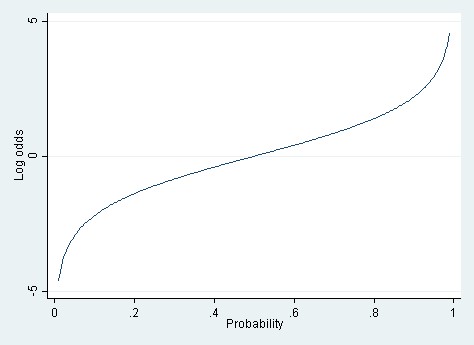



Linear Vs Logistic Probability Models Which Is Better And When Statistical Horizons
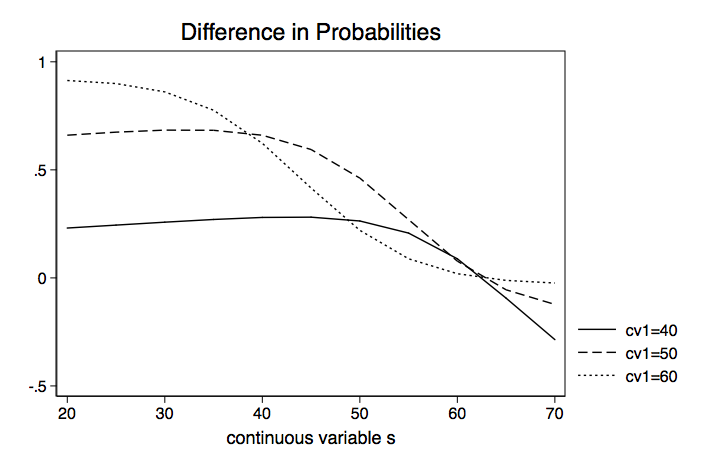



Deciphering Interactions In Logistic Regression




Logistic Regression Estimates Odds Ratios Of The Probability Of Download Table
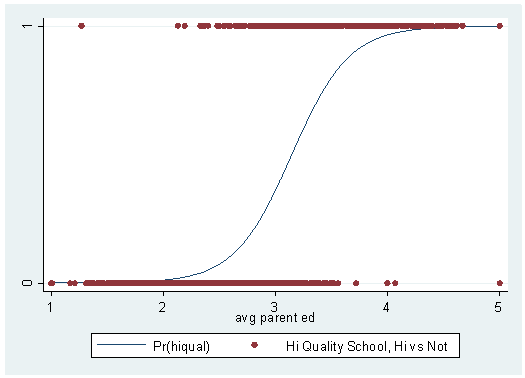



Logistic Regression With Stata Chapter 1 Introduction To Logistic Regression With Stata




What And Why Of Log Odds What Are Log Odds And Why Are They By Piyush Agarwal Towards Data Science



Introduction To Logistic Regression



Logistic Regression




Gr S Website




Ordered Logit Wikipedia



Logistic Regression




Logistic Regression Coefficients Predicting The Odd Ratio Of The Download Table




Chapter 5 Logistic Regression Hands On Machine Learning With R
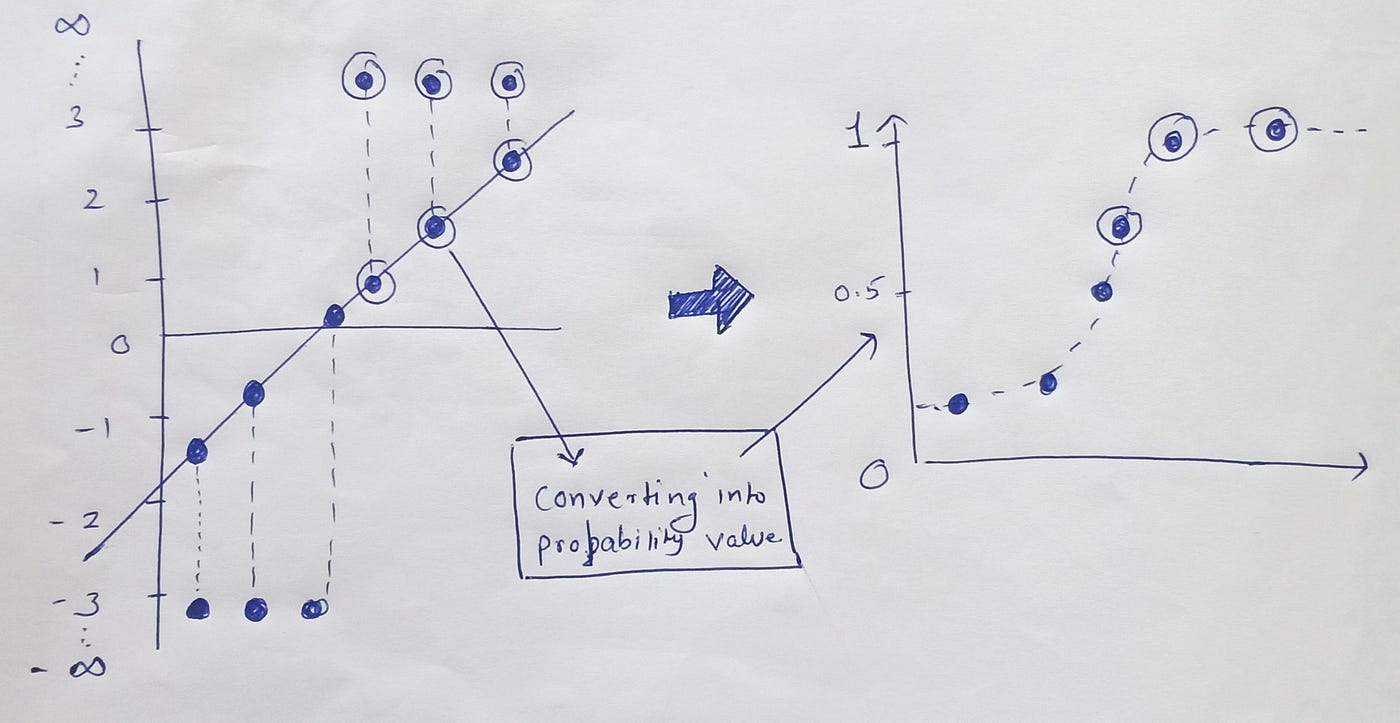



Logistic Regression The Journey From Odds To Log Odds To Mle To Woe To Let S See Where It Ends By Rutvij Lingras Analytics Vidhya Medium




Logistic Regression The Ultimate Beginners Guide




Percent Change In Odds Ratio For The Multiple Logistic Regression Nas Download Scientific Diagram




Logistic Regression Calculating A Probability




The Difference Between Logistic And Probit Regression The Analysis Factor



Logistic Regression




Graphpad Prism 9 Curve Fitting Guide Example Simple Logistic Regression




9 2 Binary Logistic Regression R For Health Data Science




Logit Of Logistic Regression Understanding The Fundamentals By Saptashwa Bhattacharyya Towards Data Science




Measures Of Association Log Odds Moore Statistics Consulting Llc




Logistic Regression Wikipedia




Proportional Odds Logistic Regression On Laef The Probability Of Download Scientific Diagram



Logistic Regression Is Not Fucked Cookie Scientist




9 2 Binary Logistic Regression R For Health Data Science




Logistic Regression Circulation



Logistic Regression Essentials In R Articles Sthda




Binary Logistic Regression With Odds Ratios Calculated For The Download Table
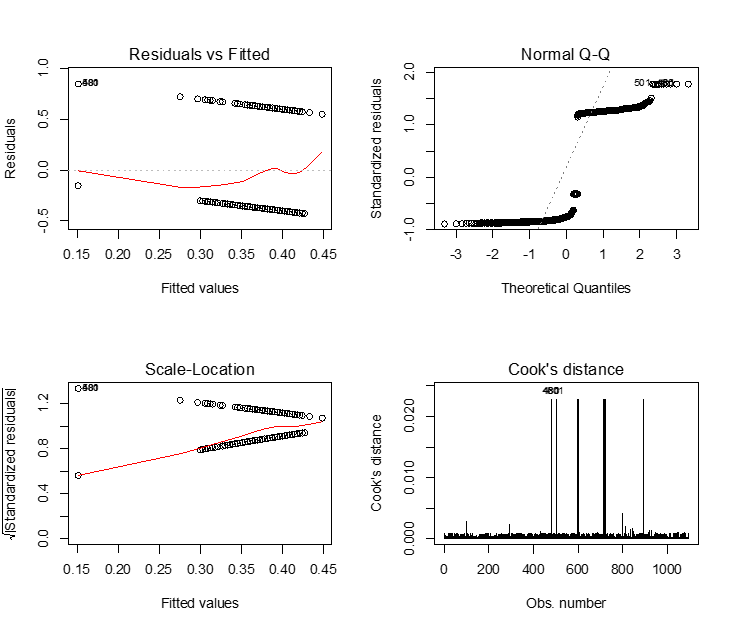



Logistic Regression
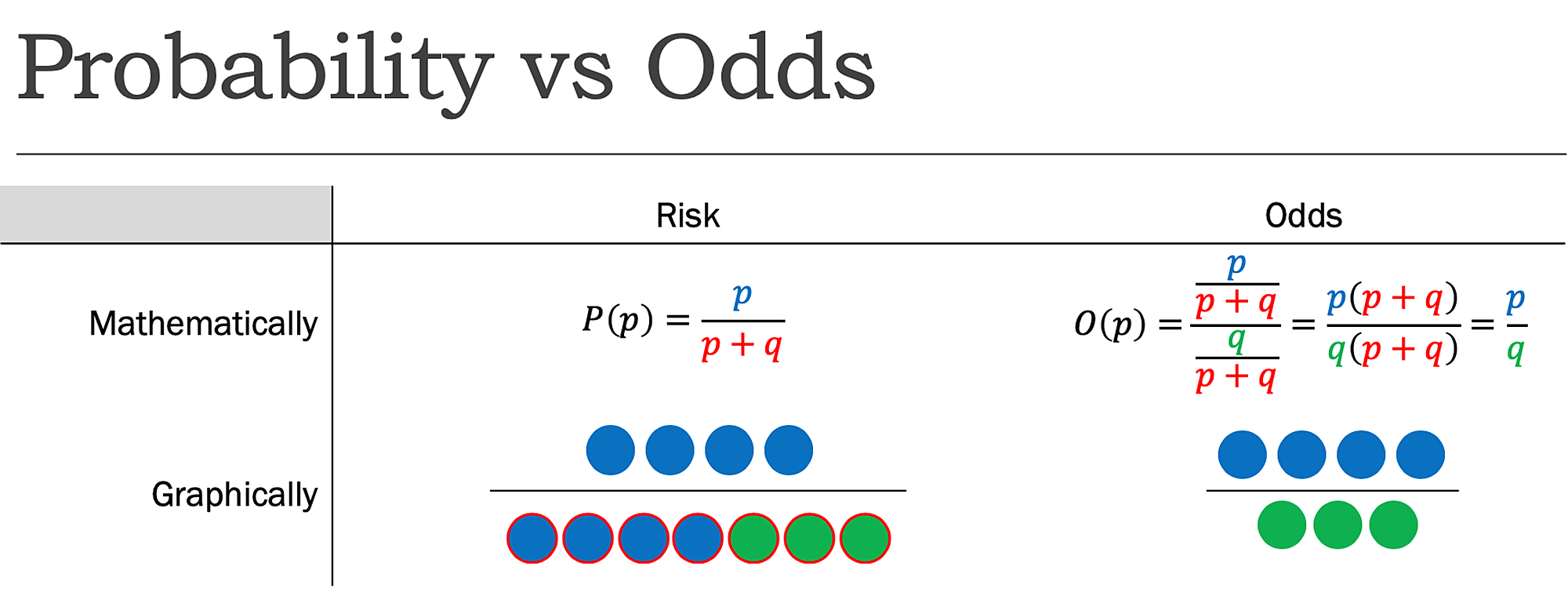



Cureus What S The Risk Differentiating Risk Ratios Odds Ratios And Hazard Ratios




Log Odds Interpretation Of Logistic Regression Youtube




Graphpad Prism 9 Curve Fitting Guide Interpreting The Coefficients Of Logistic Regression




Logistic Regression 2 Sociology 11 Lecture 7 Copyright



The Stata Blog Probability Differences And Odds Ratios Measure Conditional On Covariate Effects And Population Parameter Effects




How To Perform Ordinal Logistic Regression In R R Bloggers




How To Interpret The Weights In Logistic Regression By Mubarak Bajwa Medium
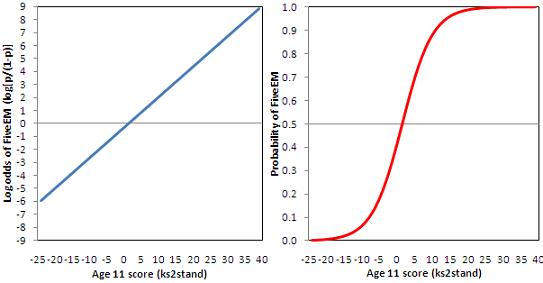



4 5 Interpreting Logistic Equations



Logistic Regression From Bayes Theorem Count Bayesie




Multiple Logistic Regression Analysis




Keep Calm And Learn Multilevel Logistic Modeling A Simplified Three Step Procedure Using Stata R Mplus And Spss



Logistic Regression



Www Jstor Org Stable
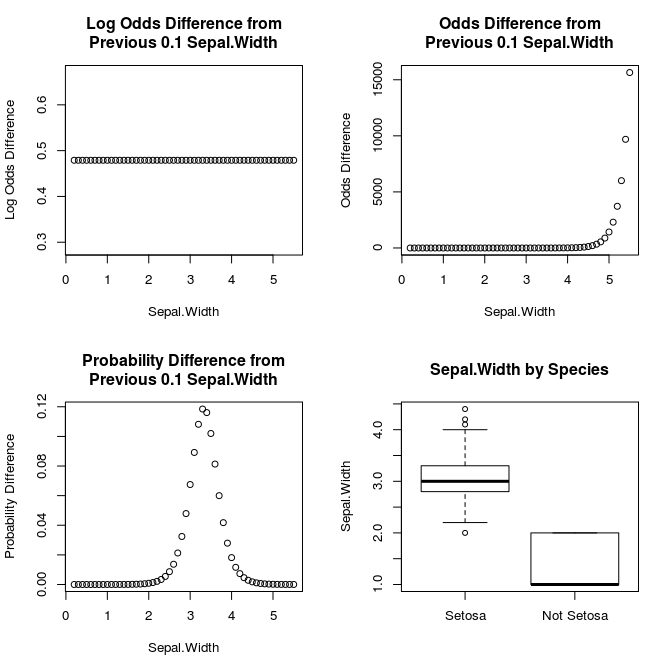



Why Saying A One Unit Increase Doesn T Work In Logistic Regression Learn By Marketing




What And Why Of Log Odds What Are Log Odds And Why Are They By Piyush Agarwal Towards Data Science
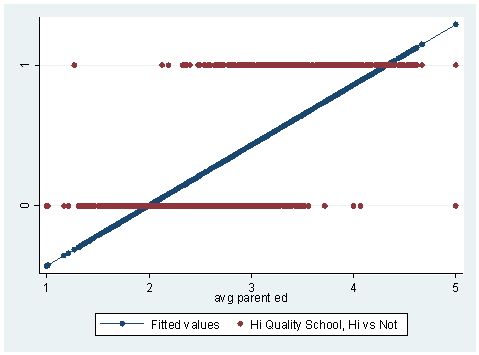



Logistic Regression With Stata Chapter 1 Introduction To Logistic Regression With Stata




Logit Wikipedia
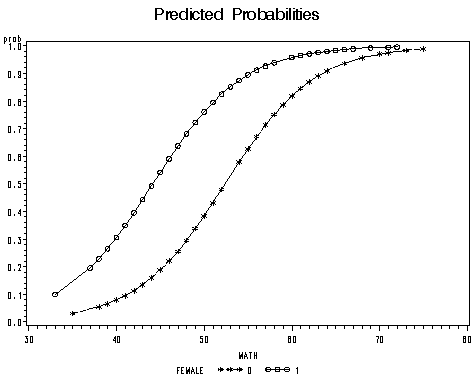



Proc Logistic And Logistic Regression Models




Logistic Regression In Sports Research
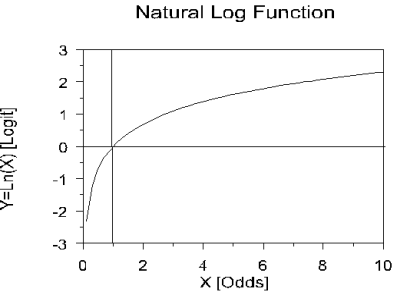



Probability Calculation Using Logistic Regression
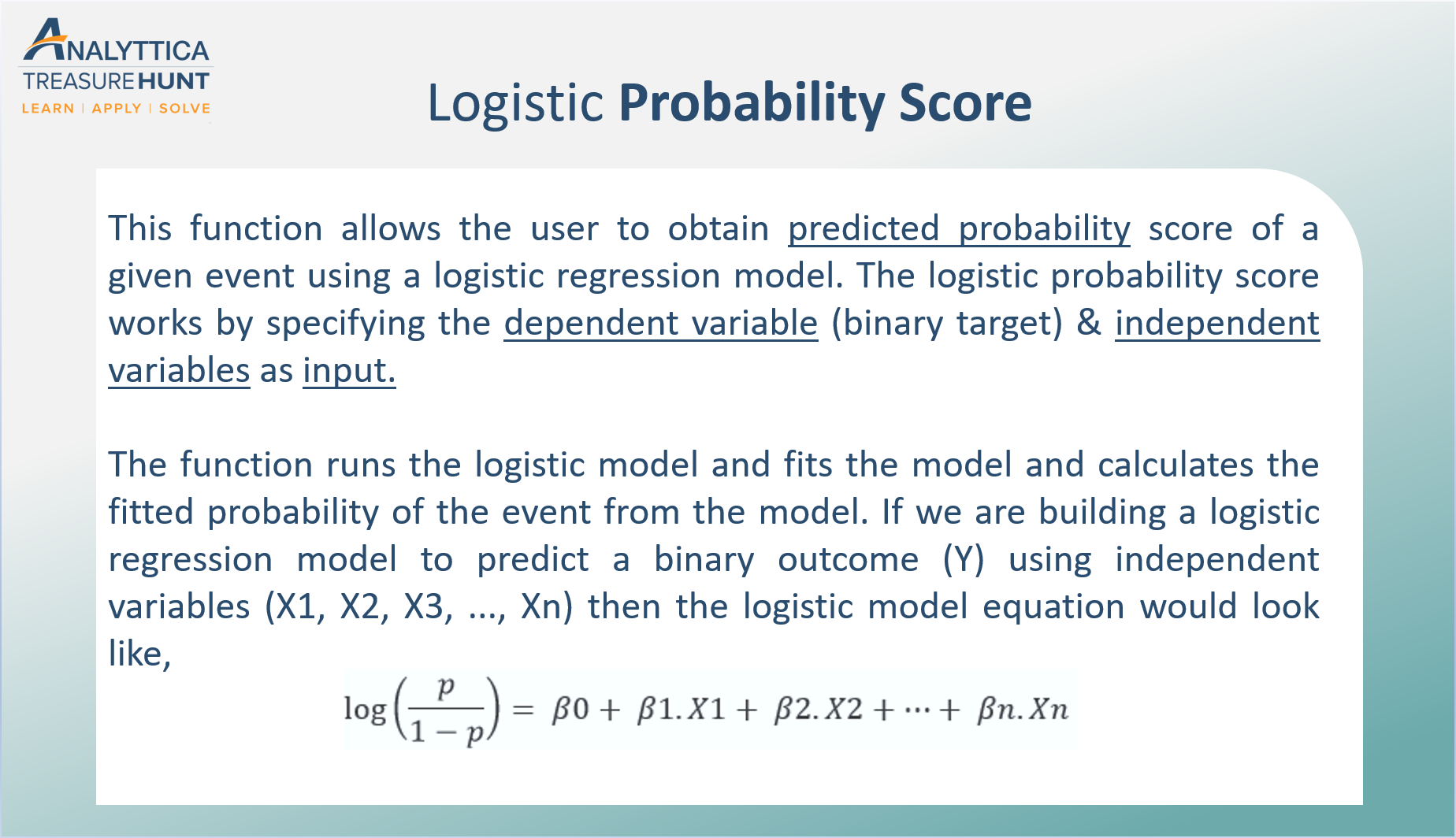



Logistic Probability Score The Logistic Probability Score Function By Analyttica Datalab Medium
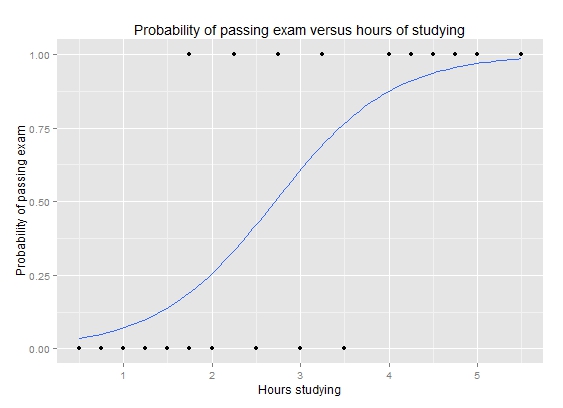



Understanding Logistic Regression Worldsupporter




Logistic Regression 1 From Odds To Probability Dr Yury Zablotski




Logistic Regression In R Clearly Explained Youtube




Statquest Odds And Log Odds Clearly Explained Youtube
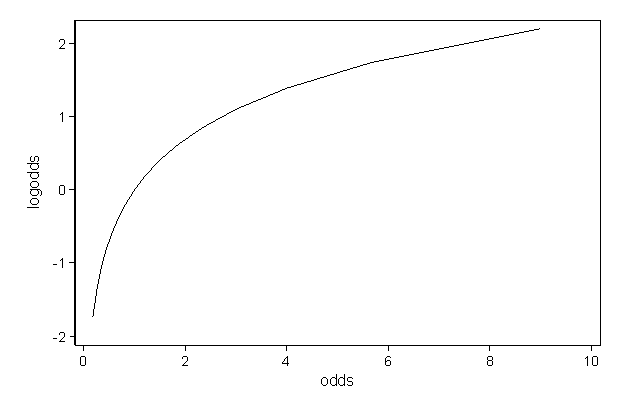



Faq How Do I Interpret Odds Ratios In Logistic Regression



1



1
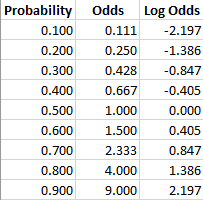



Log Odds Definition And Worked Statistics Problems
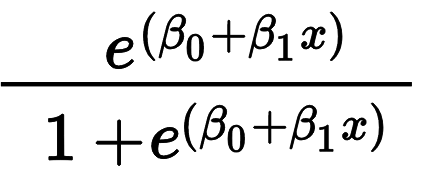



Logistic Regression Explained Learn By Marketing



Simple Logistic Regression




Logistic Regression In Python Real Python
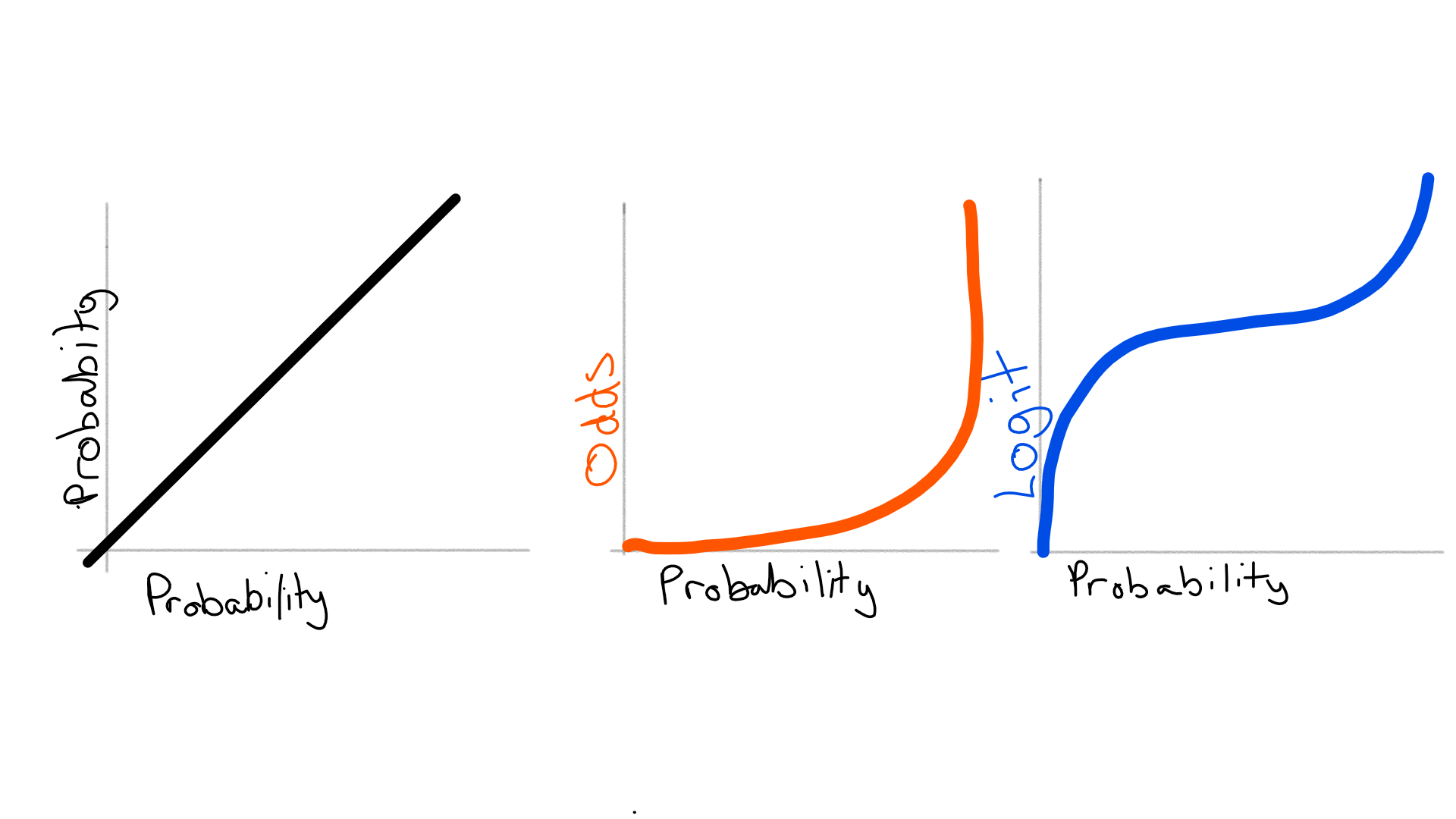



How To Go About Interpreting Regression Cofficients




Odds Ratio The Odds Ratio Is Used To Find The By Analyttica Datalab Medium




Logistic Regression Stata



Logistic Regression Multiple Logistic Odds Ratio Statsdirect
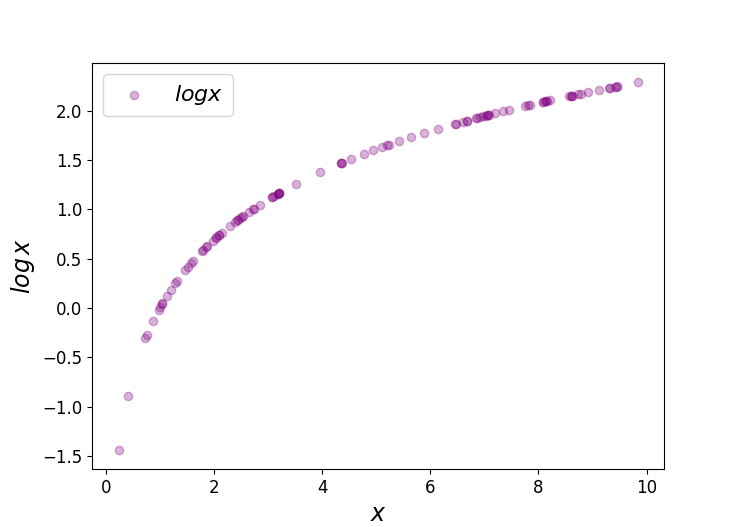



Logit Of Logistic Regression Understanding The Fundamentals By Saptashwa Bhattacharyya Towards Data Science




Graphpad Prism 9 Curve Fitting Guide Interpreting The Coefficients Of Logistic Regression




What And Why Of Log Odds What Are Log Odds And Why Are They By Piyush Agarwal Towards Data Science
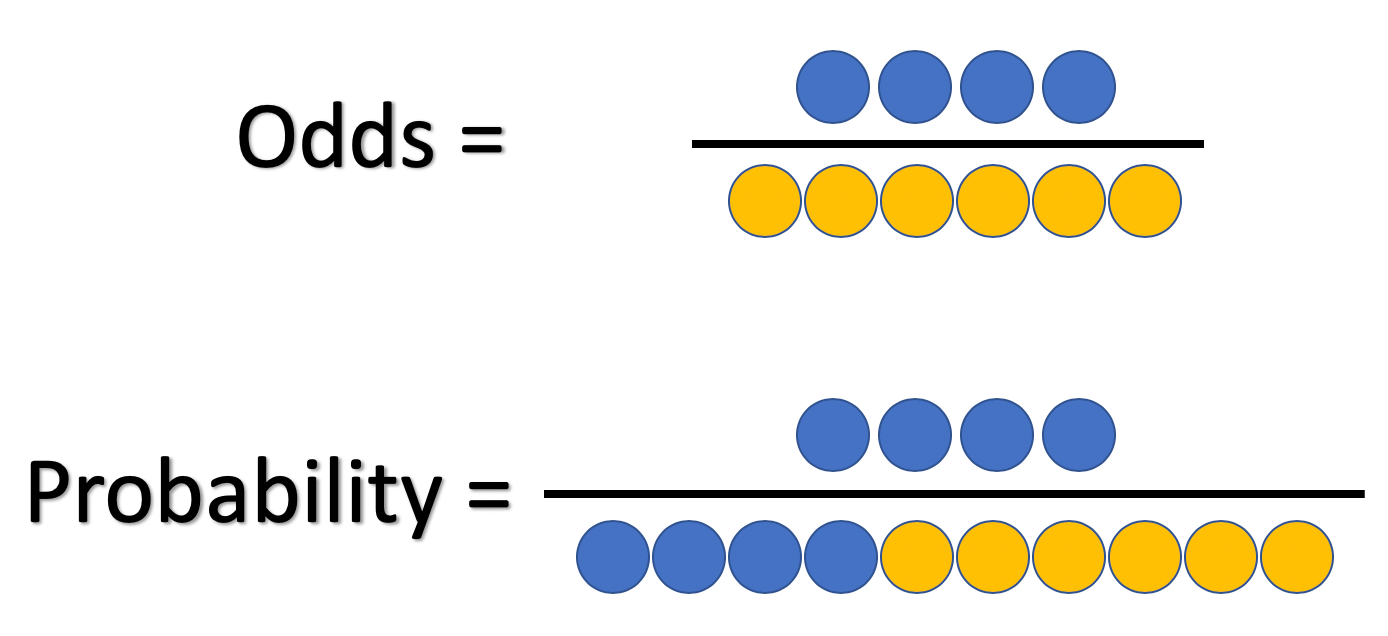



What And Why Of Log Odds What Are Log Odds And Why Are They By Piyush Agarwal Towards Data Science
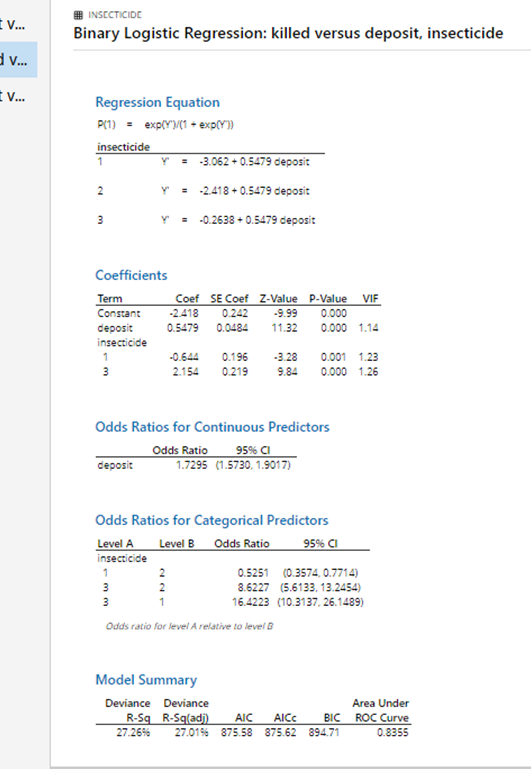



Ii Binary Logistic Regression Insecticides Xlsx 3 Chegg Com




4 2 Logistic Regression Interpretable Machine Learning




Logistic Regression In R Nicholas M Michalak




Introduction To Categorical Data Analysis Odds Ratio Measure




Use And Interpret Logistic Regression In Spss




Logistic Regression Estimates Of The Probability Of Arranged Vs Download Scientific Diagram




Understanding Logistic Regression Coefficients By Ravi Charan Towards Data Science




How To Perform Logistic Regression In Spss



1




Statistics 101 Logistic Regression Odds Ratio For Any Interval Youtube




Logistic Regression Reporting Odds Ratios Youtube



0 件のコメント:
コメントを投稿